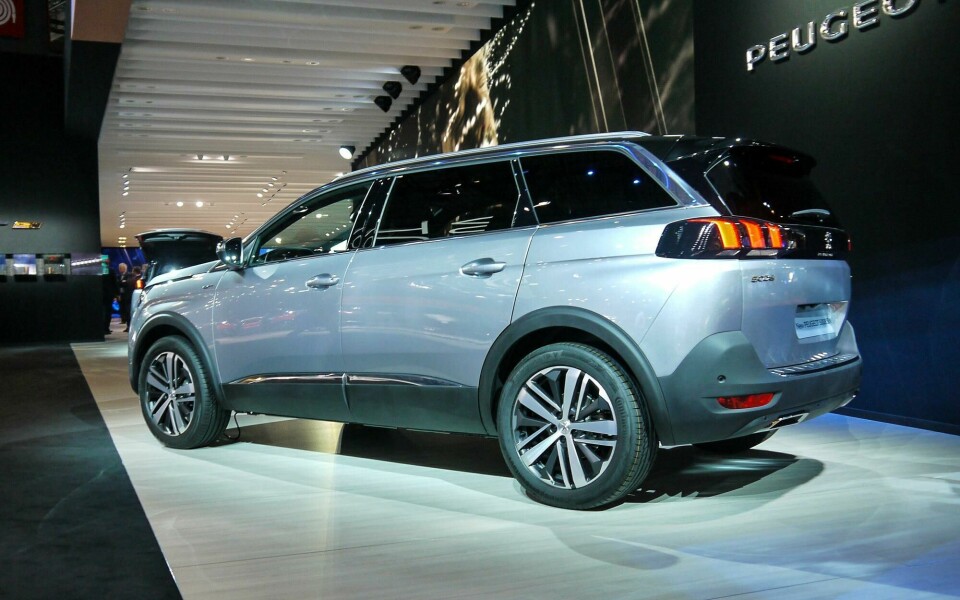
Paris 2016: Peugeot’s 5008 and 3008 make a pair
Two mid-size Peugeots for the price of one
Peugeot’s seven-seat 5008 has followed the smaller 3008 in transforming from ovoid people carrier into bluff crossover with its latest generation, unveiled in Paris. The two cars are very closely related, with identical sheet metal from the B-pillar forward and the same front cabin design.

The pair provide a lesson in how the eye sums up the whole when judging proportions. Viewed from the side, the 5008 (above) appears significantly taller and more slab sided, when in reality its door handles are almost exactly the same height from the ground as those of the 3008 (below).

The 5008 gains 190mm extra length and a more upright tail to accommodate its third row of seating. By contrast the 3008 has a faster angle to its rear hatch and a rising belt line from the B-pillar back. These relatively small changes are sufficient to transform the overall impression from boxy to racy.

Both cars share a very upright nose, together with a distinct two-box outline reinforcing the SUV impression. The concave section of the grille provides a distinctive element, together with the chunks taken from the base of each lamp can. The front lamps are drawn back to meet a chrome-accented vent at the edge of the clamshell bonnet, which runs rearward almost to the base of the A-pillar. The vent breaks up what would otherwise be a very slabby area above the front wheelarch.

Plenty of chrome was in evidence on both the 5008 and 3008 examples shown off in Paris, mostly low down at rocker level or inset into bumpers. It doesn’t quite succeed in providing the classy feel presumably aimed for, though the treatment is preferable to the odd slice of chrome tacked over the rear doors of the smaller 2008.

Inside, the 5008 and 3008 differ only in the rear. Up front, there is the now familiar small Peugeot wheel, here given a flat top and bottom providing a distinctly octagonal look. The instrument binnacle, viewed across the top of the wheel, is a 12.3-inch digital panel. Providing half a dozen modes, the panel graphics tumble playfully from one format to another. The central touchscreen, by contrast, is more sober in its behaviour with crisp lettering and unfussy symbols. The two screens feel as if they were developed by different teams.

Echoing the lavish exterior chrome, the centre console includes a standout metallic accent, sadly a little plasticky to the touch, which surrounds the gearshift area and joins with a row of appealingly tactile switches – a contrast to the prevailing trend of banishing all but essential functions to the touchscreen.

Also notable is the way the door panel meshes with the end of the dash, like the teeth of two gear-wheels. It’s an unusual treatment that provides a more integrated look when closed than the usual practice of simply butting these two surfaces together.
Overall, Peugeot looks to have created two appealing cars for much the same price as one – with the pair likely to be perceived as more different than they are in reality.



